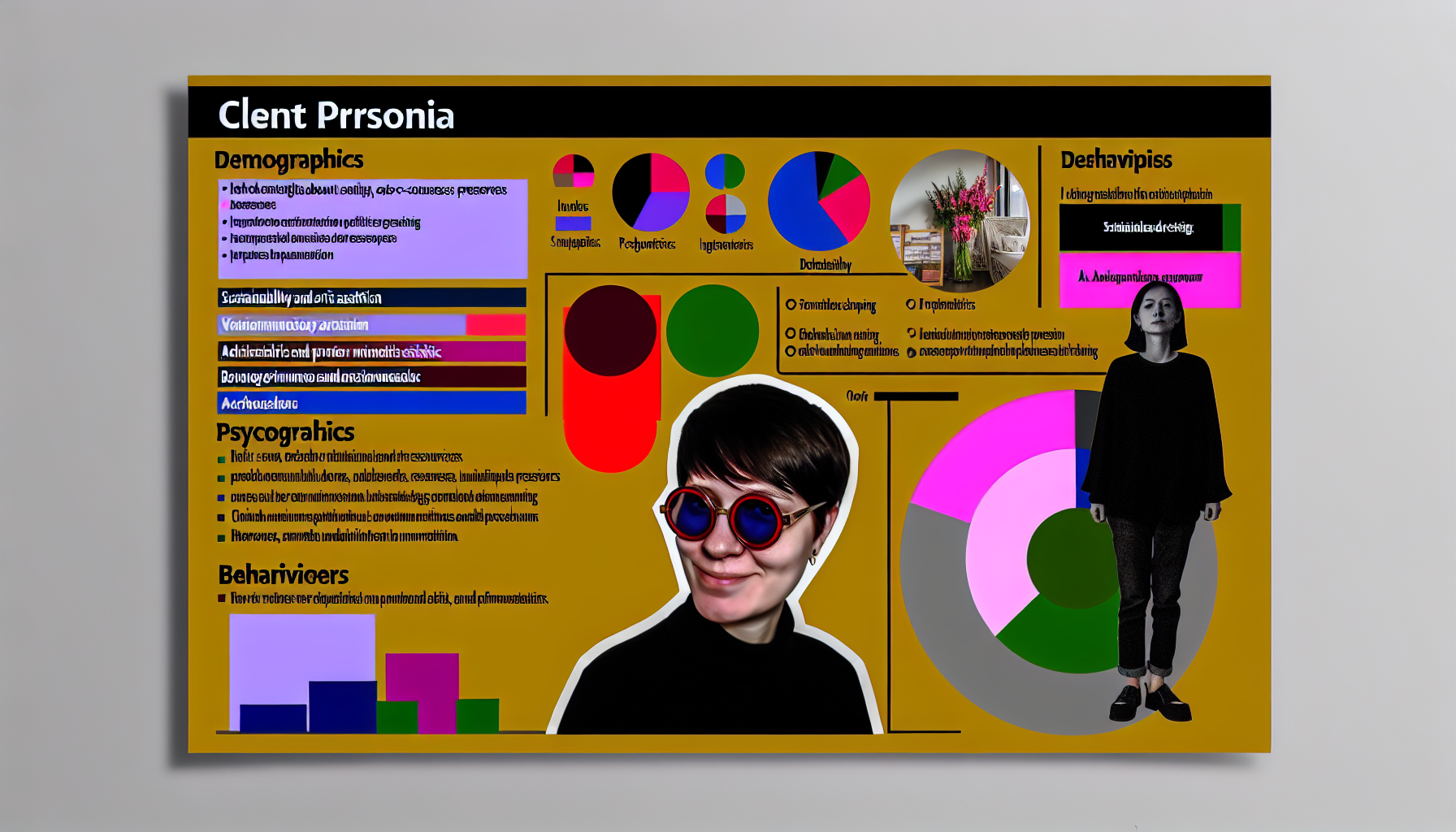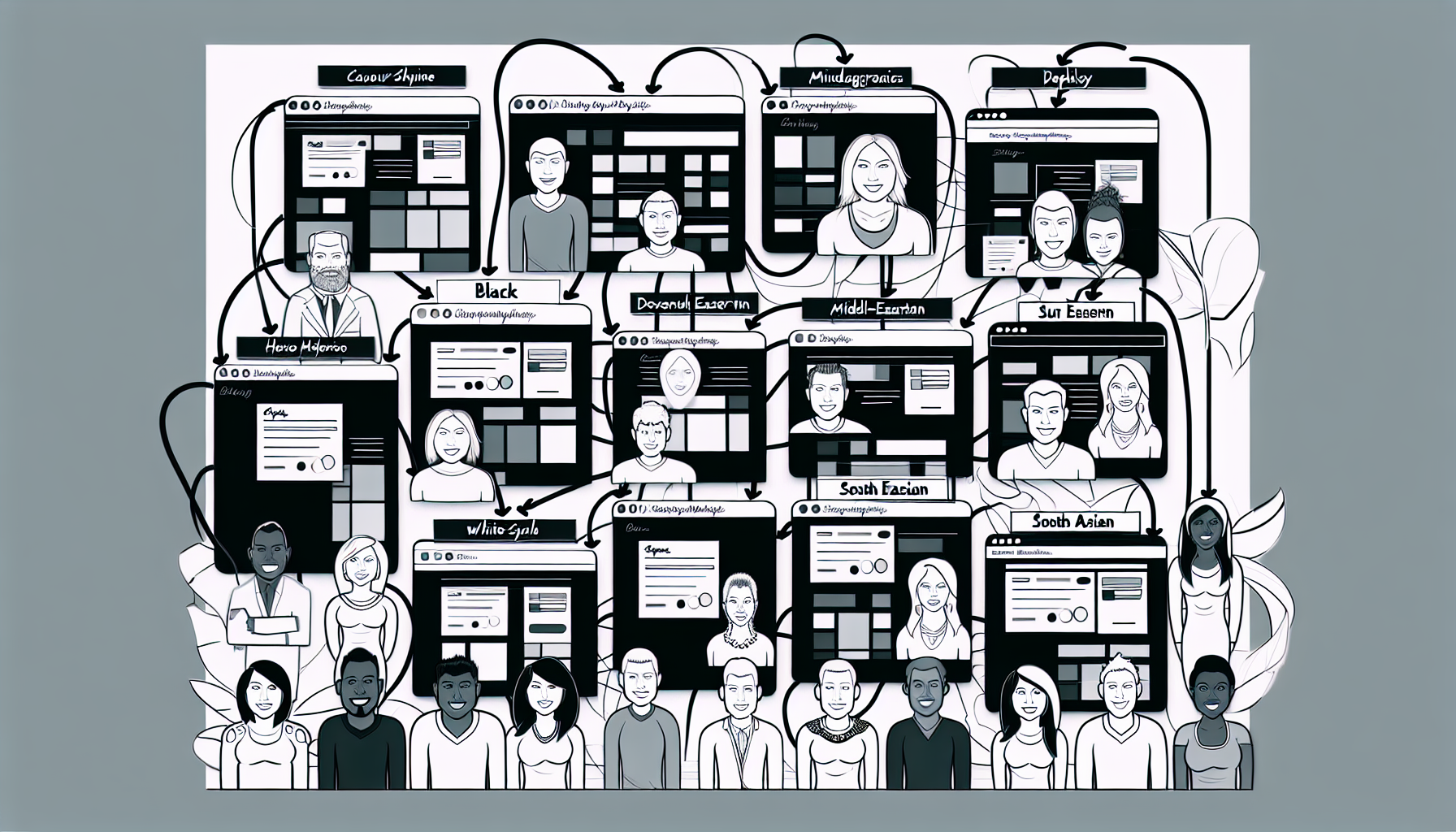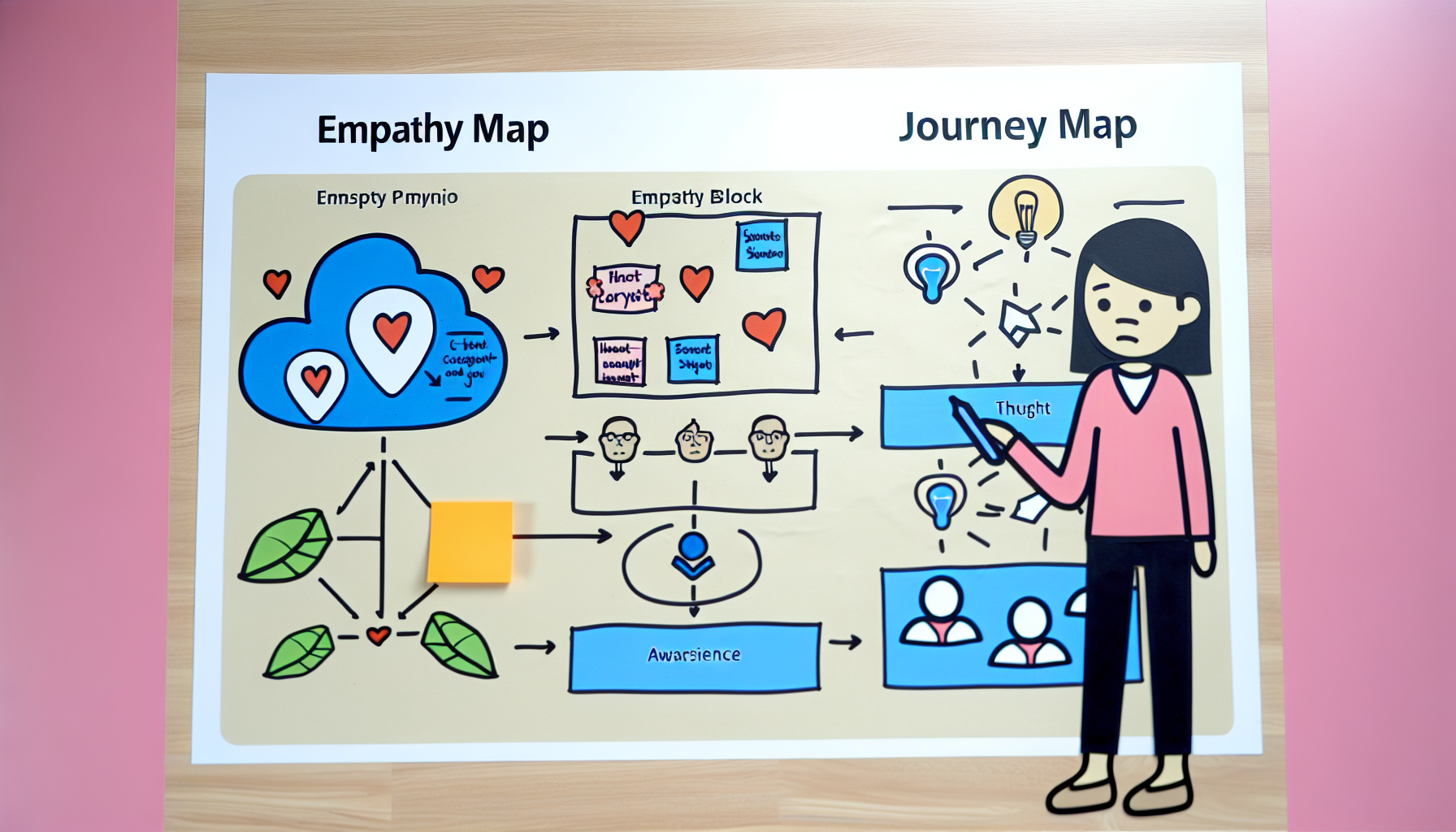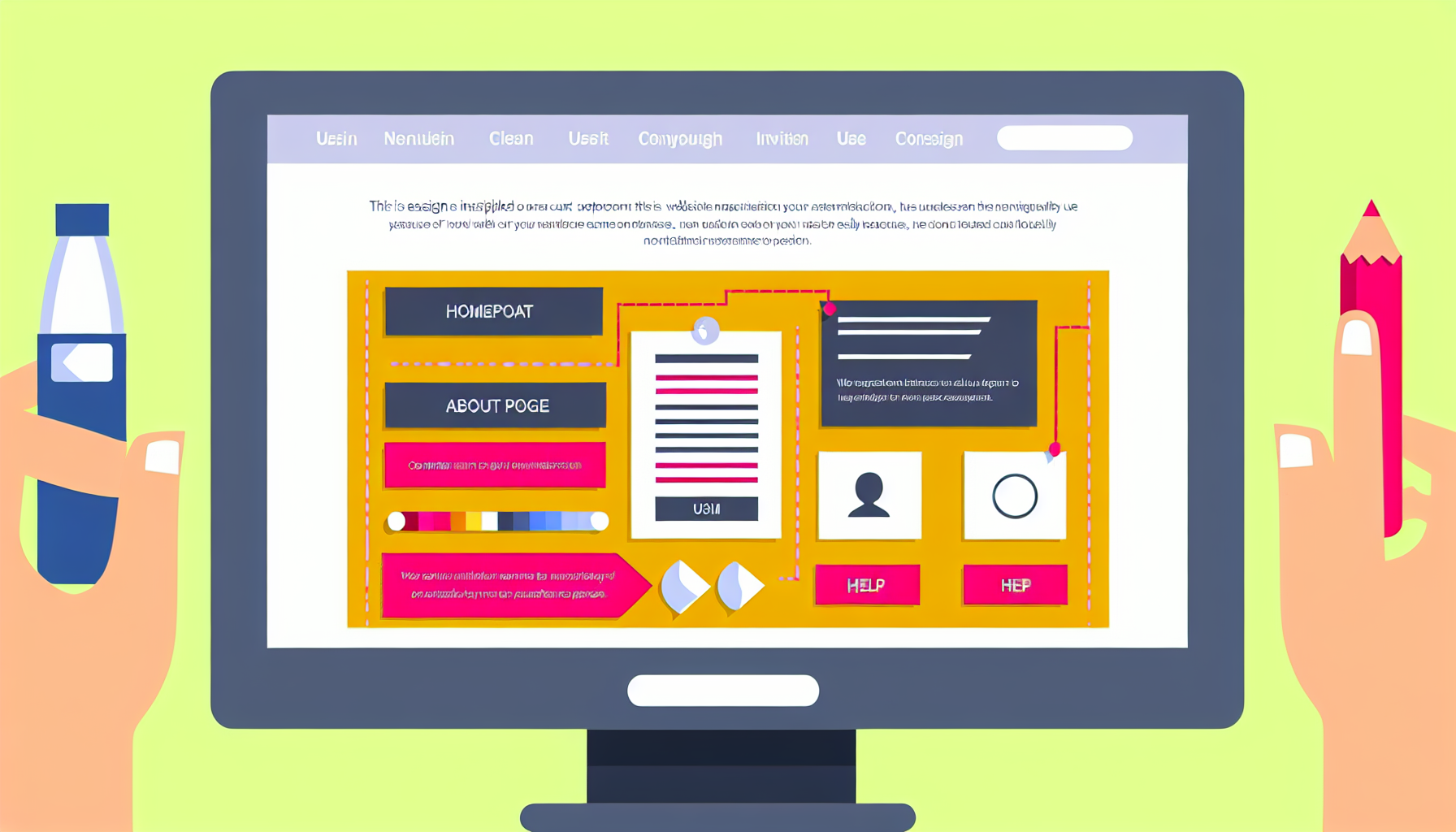The Role of an Ideal Client Persona in Effective Website Design
In the ever-evolving digital landscape, where the target audience's attention is scattered across numerous platforms, businesses must craft websites that speak directly to their ideal clientele. The creation of an ideal client persona becomes a cornerstone of this endeavor, ensuring that websites are not only visually appealing but also resonate with the users they aim to serve. This article explores the significance of integrating client personas into website design, guiding you through their creation and utilization for improved user experiences.
Understanding the Ideal Client Persona
A client persona, often referred to as a buyer persona, is a semi-fictional representation of your target customer, constructed through thorough research and data analysis. These personas synthesize demographic, psychographic, and behavioral insights, which pave the way for designing websites tailored to meet users’ needs. By investing time in developing client personas, businesses can create designs that translate into higher engagement, satisfaction, and conversion rates.

Graphic representation of a client persona profile including demographics, psychographics, and behaviors
Developing robust client personas involves understanding the distinct characteristics that define your audience. This entails identifying not only who your customers are but also understanding their behaviors, motivations, preferences, and challenges. The persona's journey must map out the user's interaction with the brand across multiple touchpoints, allowing businesses to deliver personalized experiences that captivate and convert.
Importance of Client Personas in Web Design Strategy
A professional web design company will know that incorporating client personas into a web design strategy extends beyond aesthetics; it influences how content is communicated, how users navigate, and ultimately how they interact with your brand. Personas help ensure that the website aligns with user expectations and solves real-world problems. This strategic approach leads to heightened user engagement, as the touchpoints throughout the site resonate with the users’ motivations and objectives.

Illustration of diverse web design strategies influenced by different client personas
Moreover, client personas help define and segment your audience for marketing content, guiding the prioritization of web design elements. Defining the primary objectives that each persona aims to achieve helps designers to focus on user-centric practices, aligning the website's architecture, content, and functionalities with these goals. This alignment paves the way for a seamless user journey, fostering loyalty and encouraging repeat visits.
Key Characteristics of an Ideal Client Persona
While crafting client personas, it is crucial to include the following elements:
- Demographic Information: Age, gender, location, and income provide the groundwork for understanding the audience's general context.
- Psychographics: Understanding users’ interests, values, and pain points allows for more tailored content that speaks directly to their needs.
- Behavioral Insights: Analyzing user habits and preferences can inform the way they navigate a website and interact with its features.
- Needs and Motivations: Identifying what drives users to your website can inform call-to-action placements and overall site architecture.
Furthermore, these effective customer personas provide actionable insights that improve user journey and engagement. They should be living documents that evolve with changing market dynamics and user feedback, ensuring continued relevance and effectiveness. Regular updates, informed by ongoing user research and market trends, keep the personas aligned with the actual needs of the audience.
How to Create Effective Client Personas for Web Design
The process of creating an effective client persona begins with comprehensive research and analysis. Here are steps to consider:
- Market Research: Gather quantitative data from analytics tools and qualitative insights from interviews and surveys to construct a well-rounded view of your clientele. Creating website-specific user personas is THE most critical step in website planning. This data serves as the foundation for understanding broader market trends and identifying gaps your product or service can fill.
- Segment Your Audience: Analyze market segments to identify various customer groups and their unique needs, ensuring personas reflect diverse user types. Most websites will have 3 to 5 personas. Each segment might represent different stages in the customer journey, each requiring distinct messaging and engagement tactics.
- Engage with Current Customers: Leverage feedback from existing clients to understand their journey and how your website can better meet their needs. This involves detailed interviews and surveys that ask clients to express their experiences in their own words, offering insights into what matters most to them.
- Document and Visualize: Compile demographic and psychographic data into coherent persona profiles, complete with names and realistic sketches, to humanize and share findings effectively within your team. Visual storytelling tools like empathy maps and journey maps can further enrich these personas by illustrating their interactions and experiences with your brand.

Visual representation of empathy maps and journey maps with client persona integration
Utilizing Client Personas for Enhanced User Experience
Client personas significantly enhance user experience by enabling designers to craft interfaces that anticipate user expectations. By aligning site functionality with user preferences, businesses can foster intuitive navigation paths, personalized content, and engaging interactions. Personas serve as a guidepost for making informed design decisions, ensuring every feature aligns with the intended audience's journey.
The use of personas ensures that the content resonates well with the target audience, addressing their specific needs and pain points while guiding them seamlessly through their online journeys. By tailoring the website experience to reflect the desires of distinct personas, businesses can create an empathetic interaction that feels personalized, thus increasing engagement and leading users closer to conversion.
The Impact of Client Personas on Website Navigation and Visual Design
Good navigation is crucial for retaining user interest, and client personas play a vital role in structuring navigational pathways that reflect user behavior patterns. Understanding the importance of website journeys through the lens of personas allows designers to highlight key areas and content that cater to user interests. Visual design elements, too, benefit from personas, as they guide the choice of color schemes, typography, and imagery that resonate with specific demographic groups.

Example of website navigation design informed by a client persona focusing on intuitive pathways
Navigation isn't simply a matter of usability; it’s about creating a journey that feels natural, logical, and engaging. Most companies will have multiple personas to represent their top client groups. Client personas inform the creation of paths that users are most likely to take, removing obstacles and easing frustrations. This approach not only improves usability but also boosts the emotional connection visitors feel towards your brand, leading to enhanced conversion rates.
Aligning Content with Ideal Client Personas
To maximize engagement, website content must echo the language and tone familiar to your client personas. Content strategies informed by personas can address the specific inquiries and concerns of diverse user groups, positioning your brand as a relatable and trustworthy source. This alignment leads to higher retention rates and better user satisfaction, significantly impacting the overall effectiveness of your website.
In practice, this means that copywriters and content marketers must translate the needs and voice of personas into actionable content that informs, delights, and persuades. Messaging strategies must answer personas' questions, challenge misconceptions, and deliver compelling narratives that guide users towards desired actions.
Customizing User Journeys Based on Client Personas
Each client persona has a unique path through your website. Identifying these paths enables you to create personalized user journeys that lead to desired outcomes. By customizing calls-to-action and designing touchpoints that appeal to individual persona segments, you enhance the potential for conversion. This targeted approach to user journeys ensures that each visitor's interaction with your site is meaningful and fulfilling.
The complexity of routing distinct personas through different funnels cannot be overstated. It demands a balance between creativity and analytics, ensuring each journey feels personal and yet efficient. Crafting customer personas helps businesses tailor their website experience, ensuring content resonates and conversions improve. Personalization tools and data analytics can be leveraged to tailor these journeys, driving engagement through dynamic content and adaptive layouts.
Testing and Iterating Website Design with Client Personas
The design process doesn't conclude with the initial launch; it involves continuous testing and iteration based on real user data. A/B testing and usability studies can reveal how well your website meets the expectations outlined by your client personas. By adapting your design in response to these insights, you refine your site's functionality and responsiveness, keeping pace with evolving user demands.
Website user personas should be created in the early stages of the website design process. Conducting user testing is vital to track how effectively personas are being served. This includes assessing whether users can achieve their goals quickly and whether any barriers to engagement exist. Regular updates based on real-time data and feedback ensure the site's design remains fresh, modern, and functional, extending beyond initial assumptions to accommodate new market conditions and user preferences.
Measuring Success with Client Persona Integration
To evaluate the impact of client persona integration in your website design, track key performance indicators such as user engagement, bounce rates, and conversion metrics. Analyzing these data points will confirm whether the personas are effectively guiding users through their journey on your site. Continuous feedback loops with your personas as reference points allow for ongoing improvements and sustained user satisfaction.
Successful integration is evidenced by a seamless experience across all user touchpoints. A strong client persona ensures your marketing budget is used effectively. Effectively utilized personas will contribute to improved brand perception and loyalty, driven by a cohesive interaction that reflects the brand's understanding of, and commitment to, addressing user needs.
In conclusion, developing and integrating client personas into your website design strategy is not merely an exercise in customer relations; it is a crucial component of digital success. By understanding who your ideal clients are and what drives them, you can tailor every aspect of your website to resonate with these users, resulting in improved engagement, stronger connections, and ultimately, higher conversions. Remember, a website should not just communicate what your business does but should bridge the gap between your brand and the clients it seeks to serve, fostering relationships that last. By embedding personas into the core of your web strategy, you create a dynamic, living document that grows alongside your business, ready to meet the challenges of today's digital marketplace.






